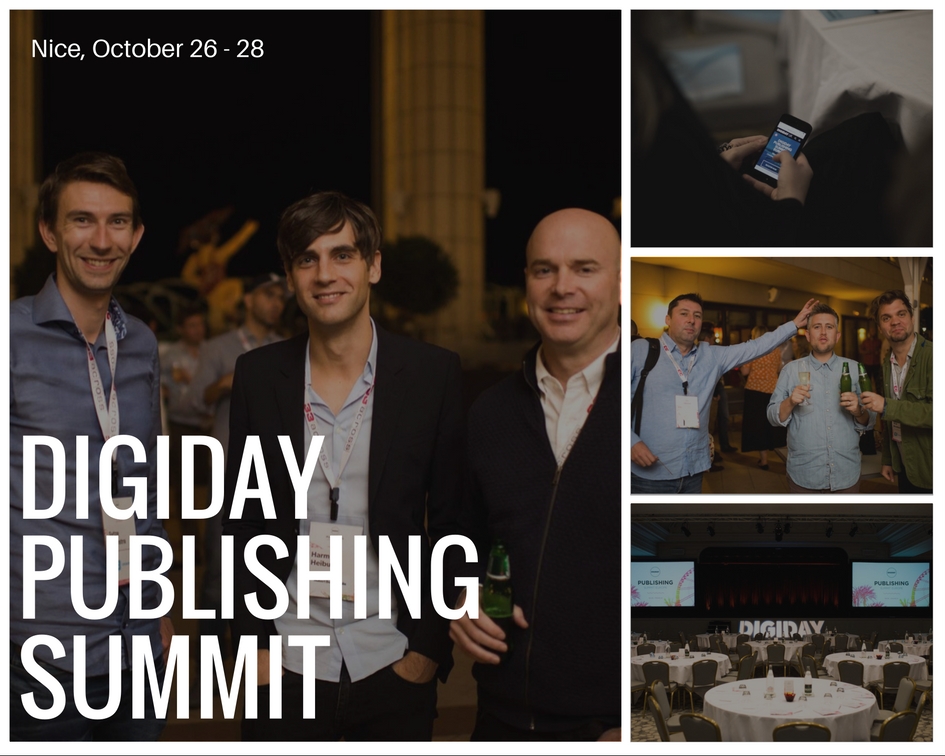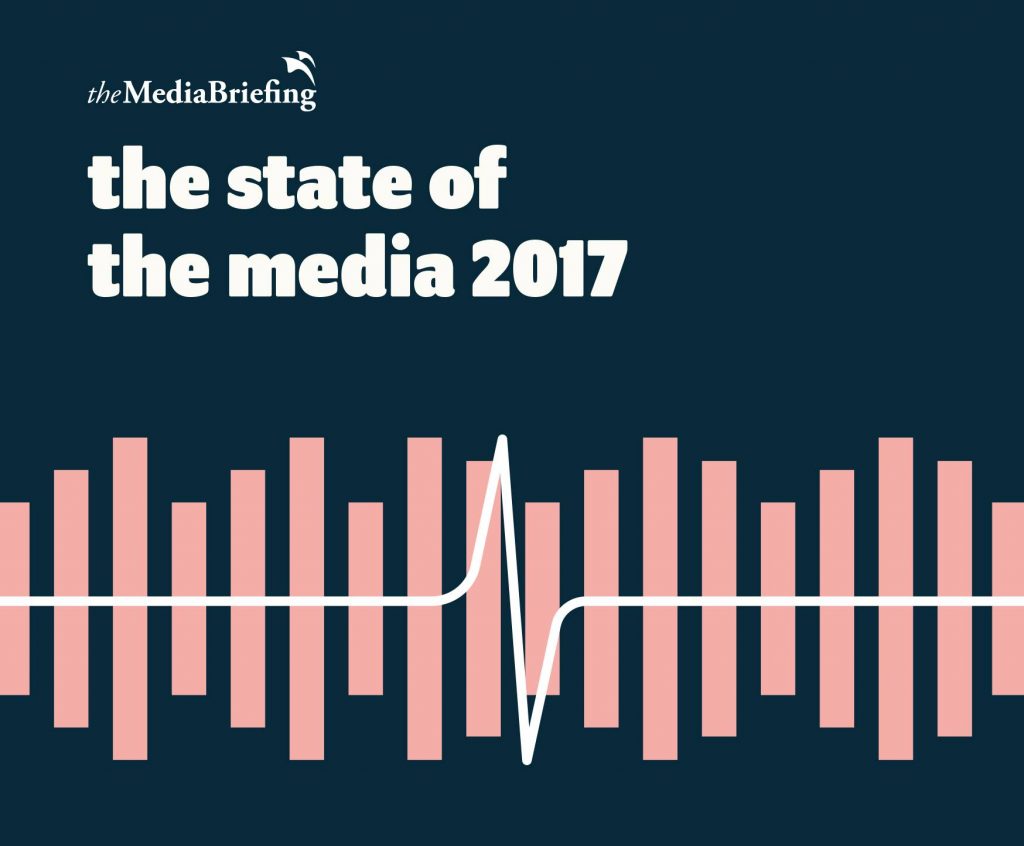Lessons learned from the Digiday Publishing Summit and “The State of the Media 2017” report by TheMediaBriefing
Last week, the Digiday Publishing Summit in Nice (France) was on our agenda. At the same time, TheMediaBriefing presented the biggest hopes and fears of publishing during their launch of the “State of the Media 2017” report. With more than 250 leading publishing executives across Europe attending the event in Nice and a global community of media executives that responded to TheMediaBriefing’s survey, no wonder that many of the main subjects discussed matched. Let’s have a closer look at the ones that stood out.

Social platforms
At the forefront of every publisher’s mind – identified both during the event and in the report – was the ever-increasing power of Facebook. Of all social media platforms publishers are working with, Facebook definitely takes the cake in terms of the biggest fear. In the report, 62% of respondents perceived Facebook as a threat while at the same time 45% see opportunities in working with Facebook. This apparent discrepancy stems from the fact that Facebook is often responsible for high traffic numbers with high bounce rates, making it difficult to monetize that traffic.
Audience data
Another subject high on the list of publishers is the use of audience data, such as demographics and behaviour. Audience development and engagement data has gives publishers the chance to learn about and from their audience. Audience data lets publishers get to know their readers, so that they can connect with their audience in more clever ways. Important questions to ask beforehand include: What data are we collecting and why? How can we use it? Or, as Bob Hoffman is quoted in the report: “Data is just a pile of bricks until someone builds a house.” During the Digiday Event, other concerns and questions raised were how to retain control of audience data and how to prevent data leakage in digital advertising.
Sponsored Content
The ongoing rise of ad-blocking, something we analyzed last year, has created a growth opportunity for sponsored content. The use of ad-blockers shows many publishers that their readers are fed-up with annoying and aggressive ads. In addition, readers are frustrated when ads slow down the loading time of a page. The need for change is obvious, but how? People are so used to getting content for free that paywalls aren’t a solution for many publishers. That’s where sponsored content comes in – content that is paid for by a commercial partner. Sponsored content is a response to the rapid rise of content marketing where brands use content such as ebooks, infographics and blogs to influence their audience. Publishers can provide a useful platform for brands that are looking to reach an audience the publisher is already connected to. During the “The State of the Media 2017” report launch, Peter Houston mentioned that he expects publishers to increasingly start building (or have already built) a content studio, to help their commercial partners create the content their audience is looking for and will likely engage.
Technology & Talent
For publishers, especially the legacy ones, it can be a real challenge to find the right tech talent. TheMediaBriefing found that only half of the survey respondents believed their business had the right skills mix in order to reach their growth potential for 2017. Digiday mentioned that tech savvy brains are especially important for publishers due to the issues around programmatic advertising. Next to that, technologies like live video, virtual reality and social media curators can open up great opportunities for publishers. However, only 43.5% of media executives believed they had the right technology in place.
These are four of the subjects that stood out from both the event and the report. Of course, many more subjects were discussed in detail, including opportunities for content distribution like email, e-commerce, membership & paywalls. Download the full “State of the Media 2017” report for free, for an easy-to-read overview of the biggest threats and opportunities identified by your fellow publishers – and use it as a resource for your decision-making for 2017 plans.

